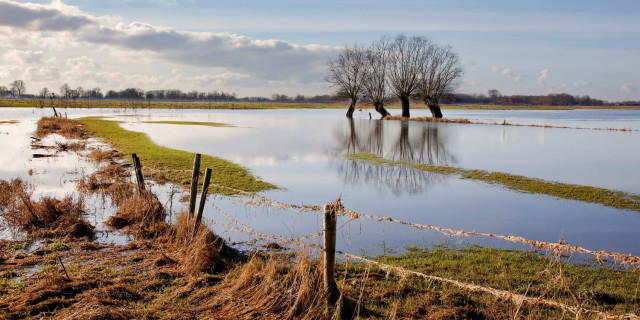
Devastating Impact of Flooding at UK Golf Courses Revealed
Has your local golf course been impacted by flooding? It's just one of many environmental challenges facing golf clubs in Great Britain, which Custodian Golf has explored in its latest findings that analyse the future viability of some courses.
Flooding & Coastal Erosion
Its white paper ‘Securing the Future of Golf’ reveals that of the 1,988 golf courses in England, 117 are identified as being at high risk of serious flooding, affecting about 6% of all courses. Flooding not only disrupts play but also reduces membership renewals, which can have a devastating financial impact on clubs already struggling with the rising costs of maintenance and insurance. The problem of flooding is not isolated; even partial course flooding can result in significant revenue losses, deterring members who may instead seek drier alternatives.
As sea levels rise and heavy rainfall events become more frequent, courses along the East Coast are facing the very real threat of disappearing beneath rising tides and coastal erosion. These changes not only threaten the physical integrity of courses but also reduce playability and deter members, potentially leading to significant revenue losses for clubs that rely heavily on memberships and visitor play.
Featured Content

Impact of Droughts
In addition to flooding, the issue of drought poses another pressing concern. The south and east of England are particularly vulnerable, with warnings of potential restrictions on water usage for golf courses. Some clubs may soon face limits on both mains water and their own borehole supplies, further underscoring the need for clubs to proactively plan for water resilience. Clubs are urged to engage with water authorities now to secure their water future, as waiting could lead to devastating consequences for the turf quality and course playability in just a few short years.
Phil Grice, Head of Venues at Custodian Golf, comments: "Water resource management has become a costly endeavour, with outdated irrigation systems leaving many clubs ill-equipped to deal with prolonged dry spells. Custodian Golf’s analysis highlights that the installation of modern irrigation technology - necessary for minimising the impact of drought conditions - can exceed one million pounds, a prohibitive expense for most clubs. In many regions, the imbalance in rainfall across Great Britain has further widened the gap between those clubs able to adapt and those at risk of closure."
"We are at a critical juncture for golf in Great Britain, the climate challenges - whether too much water or too little - are exacerbating an already tough economic environment for golf clubs. A proactive and data-driven approach is vital to help clubs navigate these challenges effectively."
The R&A’s Golf Course 2030 initiative highlights how clubs can prepare for these climate impacts. Current research focuses on water management strategies, integrated pest and disease management, and coastal management techniques to ensure a more sustainable future for golf. These projects include solutions like developing drought-tolerant turf varieties, establishing best practices for water usage, and implementing coastal protection measures to mitigate the risk of erosion
Professor Jacob Tompkins OBE, Water Consultant at Ecoprod commented: "Floods and droughts pose a direct threat to the game of golf. Golf clubs should pay attention to this report as they have a stark choice. They can either play a part in tackling flood and water resources by being more efficient with their water use and by managging their land to accommodate intense rainfall and providing enhanced habitats, or they can face an uncertain future where they are seen as a burden on the environment and compete with business and domestic properties for dwindling water supplies. Golf courses should embrace sustainable water management immediately."
Custodian Golf advocates for strategic changes, such as implementing smart irrigation systems that target specific areas of the course, and only as needed, and developing flood-resilient course designs. Additionally, embracing Environmental, Social, and Governance (ESG) principles is key to the evolution of golf clubs into community-focused venues that offer more than just traditional golfing experiences.
With 433 golf clubs across Great Britain identified as vulnerable to closure, Custodian Golf’s white paper urges the golf community to act now. By investing in sustainable practices, embracing new technology, and reassessing business models, the sport can adapt to its evolving environment while continuing to provide a valuable recreational outlet for future generations.
For more information and to access the white paper, please visit https://www.custodiangolf.co.uk/.
Related Content
1 in 6 Golf Clubs in Britain Face Potential Closure
Future of Golf Clubs Threatened by Flooding And Vandalism
Tags: GOLFERS Golf Clubs Golf daily picks









